Fixed Wheel Jogging Stroller: Top 3 Benefits for 2025
Understanding Fixed Wheel Jogging Strollers: A Serious Runner’s Choice
A fixed wheel jogging stroller is a specialized type of baby stroller designed specifically for running at higher speeds with improved stability and safety. Unlike traditional strollers, these models feature a non-swiveling front wheel that remains in a fixed position.
Key Features of Fixed Wheel Jogging Strollers:
- Front wheel permanently fixed in forward position
- Larger wheel diameter (typically 16+ inches)
- Improved suspension systems
- Streamlined design for reduced drag
- Hand brakes for downhill control
- Wrist tethers for additional safety
Fixed wheel jogging strollers provide superior tracking and stability at high speeds, making them the preferred choice for serious runners and marathon trainers. While they may require specialized turning techniques (lifting the front wheel slightly or using a push/pull method), the trade-off is significantly improved safety when running at pace.
“One of the most confusing questions for new running buggy shoppers is why some buggies have a fixed front wheel, some not, and why it is important,” notes one expert review. The answer lies in the improved stability that prevents dangerous wobbling at higher speeds.
I’m James Mark, a jogging stroller specialist with over 5 years of experience testing and reviewing fixed wheel jogging strollers for active parents. My expertise helps runners find the perfect balance between performance and child safety.
Basic fixed wheel jogging stroller glossary:
Why Stability Matters for Serious Runners
When you’re hitting your stride with your little one in tow, stability isn’t just a nice-to-have feature—it’s absolutely essential for safety and performance. This is where a fixed wheel jogging stroller truly proves its worth for dedicated runners.
The Physics of Running with a Stroller
I remember the first time I tried running with a regular stroller—it was like trying to steer a shopping cart with a mind of its own! The biomechanics of running change dramatically when you’re pushing 30+ pounds of stroller and child. As your pace picks up to 6-8 mph or higher, the forces on the stroller multiply, which is precisely when that fixed front wheel becomes your best friend.
The fixed wheel creates a stable axis point that maintains your forward momentum without wavering. Think of it like the difference between running on a treadmill versus an unstable surface—one gives you confidence, the other keeps you constantly adjusting.
“For serious running where speed and stability are critical, a fixed front wheel is preferred,” notes GearLab after putting more than 35 jogging strollers through rigorous testing. Their findings consistently showed that fixed wheel models provide superior stability when you’re really moving.
Preventing the Dangerous Wobble
Have you ever seen a shopping cart with a wobbly wheel? Now imagine that at running speed with your precious cargo aboard! That’s essentially what can happen with swivel-wheel strollers at higher speeds—a phenomenon experts call “speed wobble.”
This isn’t just annoying—it can be downright dangerous. When a swivel wheel begins to oscillate side to side, the wobble can quickly escalate, potentially causing you to lose control or even tip over. A fixed wheel jogging stroller completely eliminates this risk by maintaining a steady tracking line regardless of:
- Those downhill stretches where momentum builds quickly
- The uneven terrain of your favorite park path or trail
- Quick directional adjustments when dodging pedestrians
- Long training runs where maintaining proper form is crucial
The Runner’s Experience
I spoke with several marathon-training parents, and their experiences were remarkably consistent. Michael Wardian, an accomplished ultramarathoner who regularly trains with his kids, affectionately calls fixed wheel models “money strollers” for serious runners. The stability they provide allows you to maintain proper running form, which becomes increasingly important during those longer weekend training runs.
At BabbyStrollers.com, we’ve found that parents who lace up regularly (three or more times weekly) overwhelmingly prefer the confidence that comes with a fixed wheel design. This preference becomes even more pronounced as they increase their mileage and pace.
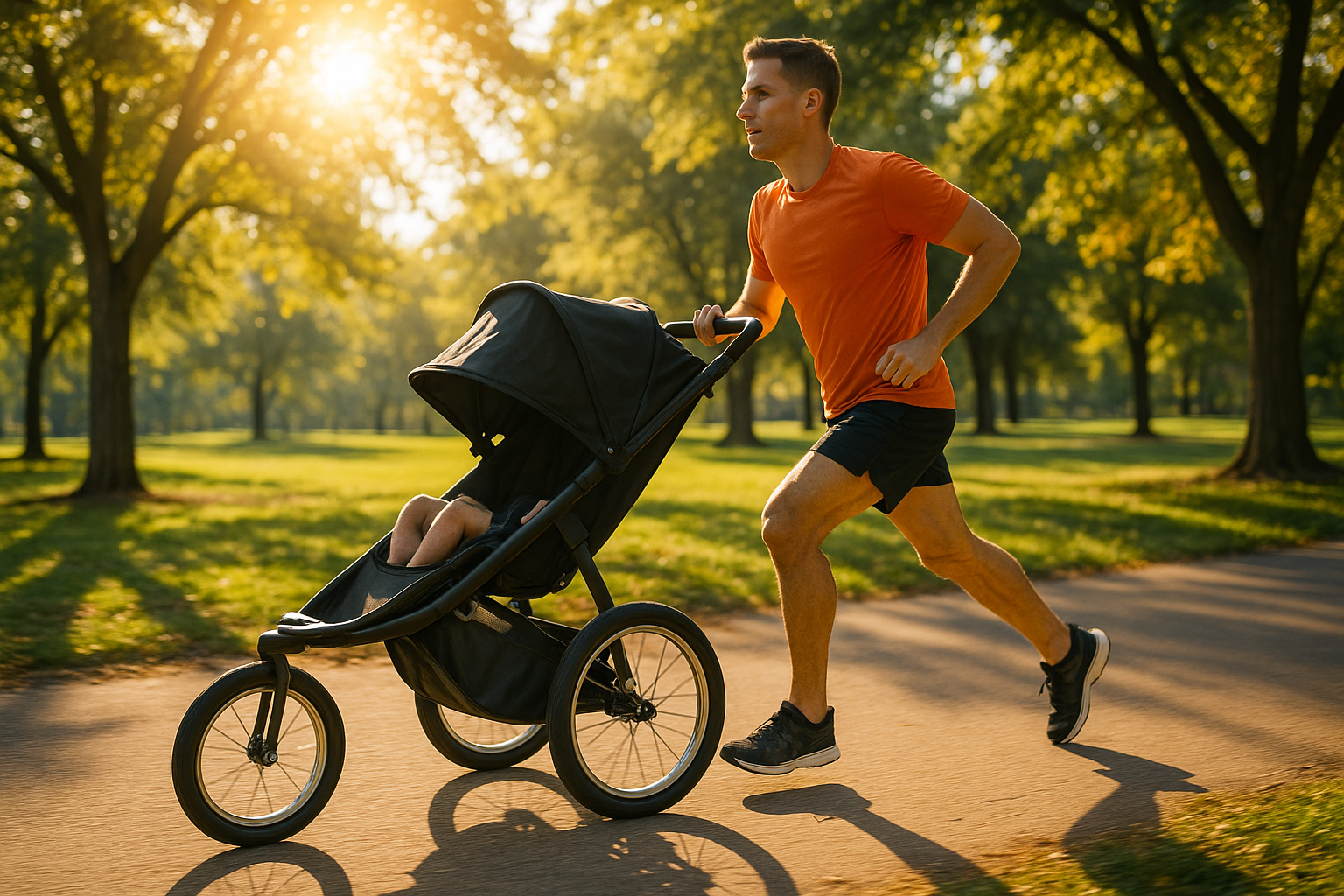
The stability of a fixed wheel doesn’t just improve your running experience—it helps protect both you and your little passenger. With less energy spent correcting your stroller’s path, you can focus on your breathing, form, and enjoying those precious moments of shared trip with your child.
The Advantages of Fixed Wheel Jogging Strollers
When you’re serious about running with your little one, a fixed wheel jogging stroller isn’t just an option—it’s practically essential gear. These specialized strollers offer benefits that make a real difference in your running experience, especially if you’re putting in serious miles or training for events.
Superior Tracking on All Surfaces
One of the most noticeable advantages of a fixed wheel jogging stroller is how beautifully it tracks in a straight line. That consistent forward motion isn’t just satisfying—it’s energy-saving too!
Many premium fixed wheel models include nifty tracking adjustment knobs that let you fine-tune the wheel alignment. This means you’ll spend less energy fighting to keep the stroller straight and more energy enjoying your run. Your arms will thank you during those longer training sessions, and you’ll find it easier to maintain a consistent pace and natural stride length.
In real-world testing, a properly adjusted fixed wheel jogging stroller can roll straight for over 40 feet when released on a flat surface. That’s nearly twice the distance of many locked swivel wheel models! This tracking advantage becomes even more apparent when you hit varied terrain like park paths or light trails.
Improved Safety Features
Safety isn’t an afterthought with these strollers—it’s built right into their DNA. When you’re moving at a good clip with precious cargo, the additional safety features really matter:
Hand brakes similar to those on high-performance bikes give you confident control when descending hills or needing to stop quickly. The lightweight but sturdy aluminum frames strike that perfect balance between durability and weight. And don’t overlook the importance of a good wrist tether—that simple strap can prevent a runaway stroller if you happen to trip or lose your grip.
“A safe run is a great run,” as one manufacturer aptly puts it. The five-point harnesses in these strollers provide more security than standard three-point versions, keeping your little passenger snug and protected even on bumpier routes.
Optimized for Performance
A fixed wheel jogging stroller is built with performance in mind from the ground up. The streamlined, somewhat aerodynamic profile cuts through the air more efficiently than bulkier everyday strollers.
Those larger wheels—typically 16+ inches in diameter—aren’t just for show. They roll over obstacles more smoothly and maintain momentum better than smaller wheels. Paired with quality pneumatic (air-filled) tires, they absorb shock and provide reliable traction on various surfaces.
Many models also feature sophisticated suspension systems that you can adjust based on terrain conditions or your running style. This adaptability means a smoother ride for your child and better control for you.
Main Benefits of Fixed Wheel Jogging Strollers
When you choose a fixed wheel jogging stroller, you’re investing in these key advantages:
- Best stability at running speeds, which becomes increasingly important as you pick up the pace
- Exceptional straight-line tracking that reduces the energy you spend making corrections
- Reliable control across varied terrain from smooth sidewalks to packed dirt trails
- Elimination of dangerous wobbling that can occur with swivel wheels at higher speeds
- Purpose-built safety features designed specifically for the demands of running
- Superior performance on rough or uneven surfaces thanks to larger wheels and better suspension
- Improved energy efficiency allowing you to focus on your form and enjoyment
As expertly noted in the Difference; Fixed Front Wheel vs. Swivel Front Wheel Running Buggy? article, “A fixed front wheel provides greater stability at higher speeds, reducing the risk of unpredictable wobbling and potential tip-overs.”
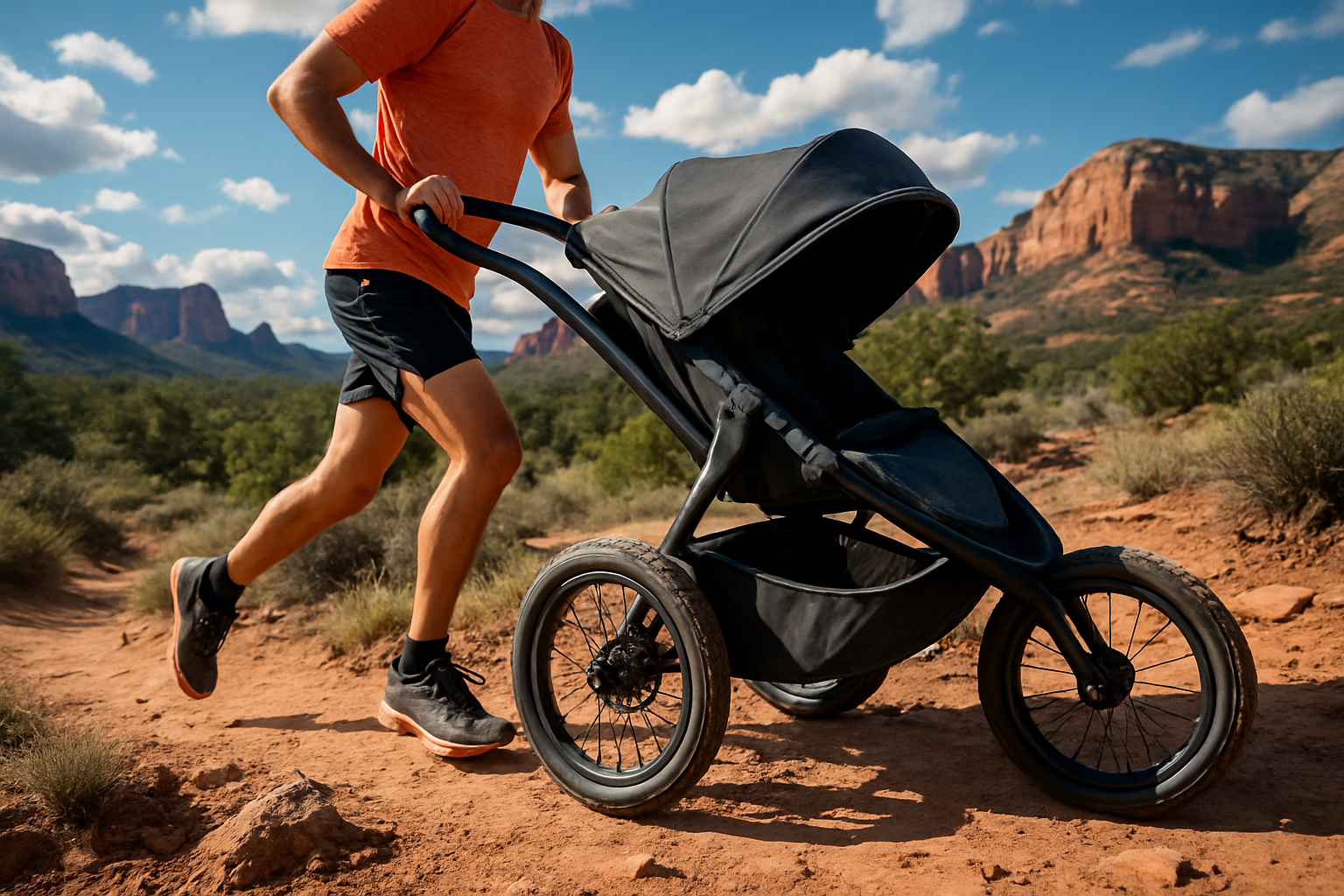
The bottom line? If you’re committed to running regularly with your child, the performance advantages of a fixed wheel jogging stroller make it worth adapting to its unique handling characteristics. The stability, safety, and specialized design features create a better experience for both you and your little running companion.
Fixed Wheel Jogging Strollers vs. Swivel Wheel Strollers
Understanding the fundamental differences between fixed and swivel wheel designs is crucial when selecting a jogging stroller that meets your specific needs. Each design has distinct advantages and limitations that directly impact performance and usability.
Design Differences
The primary distinction between these two types of jogging strollers lies in the front wheel design:
Fixed Wheel Jogging Strollers feature a front wheel permanently locked in forward position, typically with a larger diameter that often matches the rear wheels. They have a longer wheelbase for improved stability and are designed primarily for straight-line movement.
Swivel Wheel Jogging Strollers have a front wheel that can rotate 360 degrees for maneuverability. They usually include a locking mechanism to convert to “fixed” mode when needed. These strollers typically have a smaller front wheel than rear wheels and offer a more compact design for everyday versatility.
The Stability vs. Maneuverability Trade-off
One expert reviewer aptly described the difference: “I feel terrible for people who buy a fixed front wheel stroller expecting something different.” This highlights the importance of understanding the inherent trade-offs before making your purchase.
When you choose a fixed wheel jogging stroller, you’re prioritizing stability and straight-line performance at the expense of easy maneuverability. For serious runners, this trade-off makes perfect sense. The fixed design virtually eliminates the risk of dangerous wobbling that can occur at higher speeds, giving you confidence during your runs.
On the flip side, swivel wheel models offer incredible maneuverability in tight spaces – perfect for navigating crowded farmers markets or narrow store aisles. However, even when locked, they typically don’t match the rock-solid stability of a true fixed wheel design when you’re running at full pace.
| Feature | Fixed Wheel Jogging Stroller | Swivel Wheel Jogging Stroller |
|---|---|---|
| Stability at running speeds | Excellent | Good (when locked) |
| Maneuverability in tight spaces | Limited (requires lifting) | Excellent |
| Tracking on straight paths | Superior | Good (when locked) |
| Risk of wobbling at high speeds | Minimal | Moderate |
| Turning radius | Wide | Tight |
| Learning curve | Moderate | Minimal |
| Suitability for serious runners | Excellent | Good |
| Versatility for everyday use | Limited | Excellent |
Performance Comparisons
In extensive testing conducted by GearLab, fixed wheel models consistently outperformed swivel wheel designs in specific running metrics.
When tested for rolling resistance, fixed wheel jogging strollers rolled an average of 35-46 feet on a standard test, compared to just 21-30 feet for swivel models (even when locked). That’s a significant difference that translates to less effort needed to maintain your pace during longer runs.
Tracking stability tests showed that fixed wheel models required fewer corrections over a standard 5-mile run. This means you can focus more on your running form and less on constantly adjusting the stroller’s direction.
The larger front wheels on fixed models also provided better shock absorption on rough terrain, resulting in less vibration transfer to both you and your little passenger. Your child will enjoy a smoother ride, and you’ll experience less arm fatigue over the course of your run.
However, it’s worth noting that swivel wheel models with locking capabilities have improved significantly in recent years. As one review noted, “Modern locking swivel wheels, when properly engaged, can rival the run-ability of fixed wheels, challenging a long-held belief among runners.”
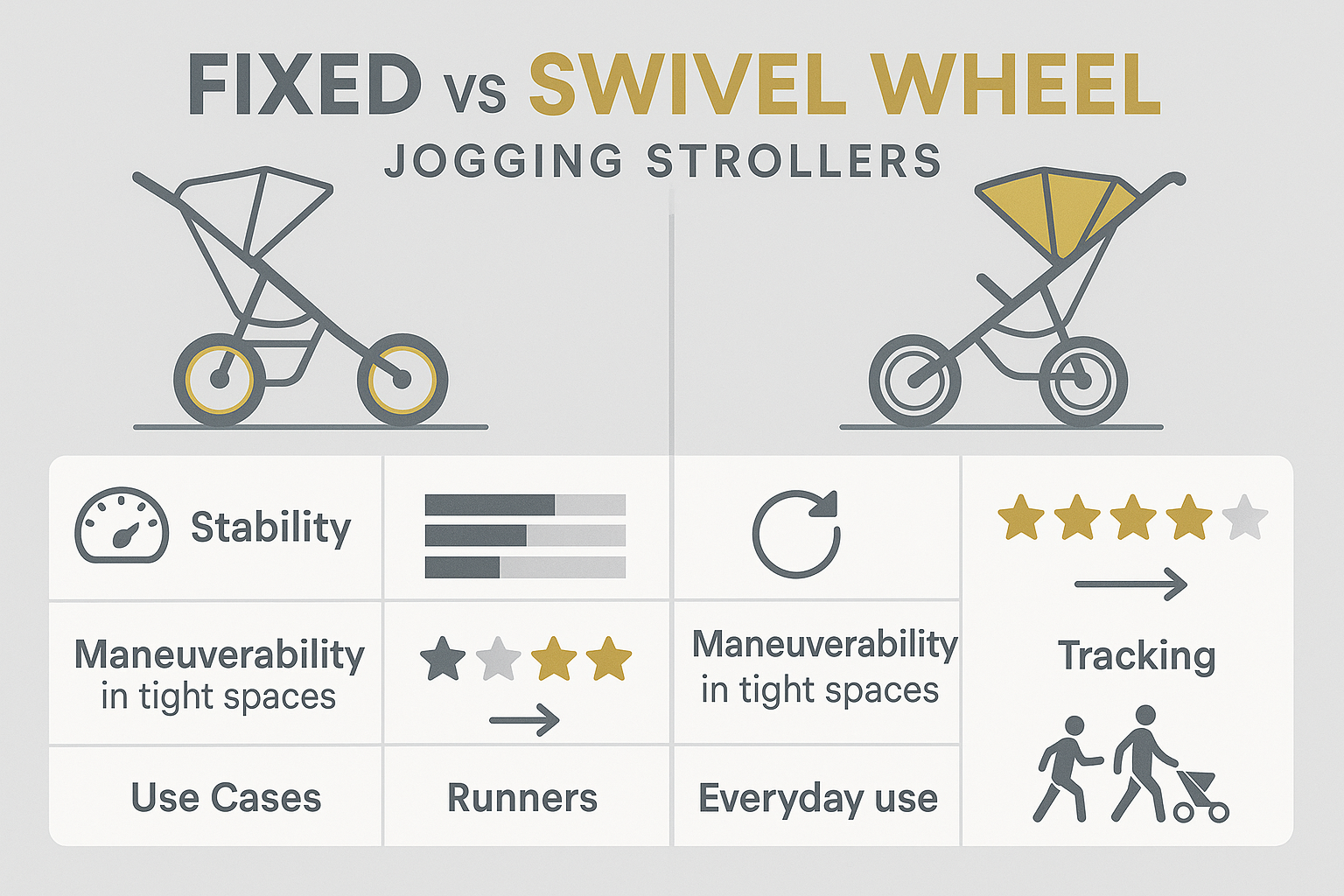
Who Should Choose Each Type?
At BabbyStrollers.com, we recommend making your choice based on your primary needs:
Fixed Wheel Jogging Strollers are ideal for serious runners who prioritize stability and performance. If you’re training for races, running longer distances, hitting the trails regularly, or consistently maintaining higher speeds (6+ mph), a fixed wheel design will serve you best. You’ll appreciate the confidence that comes from knowing your stroller will track straight and true, even when you’re pushing your pace.
Swivel Wheel Jogging Strollers better serve casual joggers who also need everyday versatility. If you’re navigating urban environments with tight spaces, frequently transition between walking and jogging, or need one stroller to handle multiple situations, the swivel design offers more flexibility. You’ll sacrifice some stability at higher speeds, but gain tremendous maneuverability for daily life.
As one running expert summarized: “If you’re serious about running with your child, a fixed wheel jogging stroller provides best stability and performance. However, if you need one stroller to ‘do it all,’ a locking swivel wheel model offers better versatility with good (though not exceptional) running performance.”
The choice ultimately comes down to how you’ll primarily use your stroller. Be honest about your running habits and lifestyle needs – this will guide you toward the design that will serve you best for years to come.
Using a Fixed Wheel Jogging Stroller Safely
Taking your little one out for a run with a fixed wheel jogging stroller can be an incredible bonding experience, but it does require some special know-how. Let’s talk about how to use these specialized strollers safely so you can enjoy those miles together without worry.
Mastering the Art of Turning
If you’re new to fixed wheel strollers, the first thing you’ll notice is that turning works differently. This is often the biggest adjustment for parents used to regular strollers.
The most popular method is what I like to call the “tilt-and-turn technique.” When you approach a corner, apply gentle downward pressure on the handlebar to lift the front wheel slightly off the ground. With the wheel liftd, you can pivot in your desired direction before setting it back down to continue. It might feel awkward at first, but trust me—after a few practice runs, it becomes second nature!
“Adopt proper turning techniques such as lifting the front wheel when using a fixed wheel buggy,” suggests running coach Wendy Rumble. “With practice, this becomes second nature and doesn’t interrupt your running rhythm.”
For gentler curves, you might prefer the “push-pull method.” By pushing down on one side of the handlebar while pulling up on the opposite side, you can create a gradual direction change without lifting the wheel completely. This works beautifully for wide, sweeping turns on open paths.
Whichever technique you choose, always keep that safety wrist strap attached! Even experienced runners can trip or lose grip unexpectedly.

Essential Safety Checks Before Every Run
Before you hit the road with your precious cargo, take a few moments for these quick but crucial safety checks:
Make sure your tires are properly inflated—typically between 30-50 PSI, but check your manual for specifics. Low pressure makes pushing harder and affects stability. Next, verify all wheels are securely attached, especially if yours has quick-release features.
Test both the foot brake and hand brake (if your model has one) by giving the stroller a gentle push while brakes are engaged. The stroller shouldn’t move at all. Always check that the 5-point harness fits snugly around your child and fastens securely.
Don’t forget to verify your stroller tracks straight on level ground—if it pulls to one side, you’ll need to adjust the alignment. And finally, give the frame a once-over to ensure everything feels solid with no excessive wobbling or loose parts.
These checks only take a minute but can prevent problems once you’re mid-run and away from home.
Proper Running Form with a Fixed Wheel Jogger
Running with a stroller naturally changes your form, but with a few adjustments, you can stay comfortable and injury-free:
Keep your posture upright with shoulders relaxed and core engaged—resist the temptation to hunch over the handlebar. Your hand position is key; keep elbows slightly bent and alternate between one and two-handed pushing to prevent muscle imbalances.
Most runners find they need to shorten their stride slightly when pushing a fixed wheel jogging stroller. This helps maintain better control, especially on hills or uneven terrain. Try to keep the stroller relatively close to your body rather than pushing it far ahead, which puts strain on your shoulders and back.
When tackling hills, lean slightly forward on the climbs (the stroller provides a nice counterbalance), and use the hand brake with shortened strides on the way down. Your little passenger will appreciate the smooth, controlled descent!
One experienced mom runner shared: “After I kicked up the pace a bit and placed the handles back to the original position, I felt more comfortable with my arms for sure.” Small adjustments to your setup can make a huge difference in comfort during longer runs.
Maintenance for Optimal Performance
Taking care of your fixed wheel jogging stroller isn’t just about longevity—it’s about safety. A well-maintained stroller performs better and provides a smoother ride for your child.
After muddy or rainy runs, take a moment to clean your wheels and check for debris that might affect performance. Weekly tire pressure checks are a must—proper inflation makes pushing easier and improves stability. A quick wipe-down of the frame and fabric also prevents buildup of dirt and sweat.
Once a month, give your stroller some extra TLC by lubricating moving parts, especially folding mechanisms. Check for any loose bolts or connections and tighten as needed. If you notice your stroller pulling to one side, now’s the time to adjust the tracking.
At the change of seasons, do a deeper inspection. Look for wear on tires and replace them if the tread is significantly worn. Check the frame for any signs of stress or damage, particularly if you’ve taken it on rough terrain regularly.
For more detailed guidance on running safely with children of different ages, head over to our Jogging Stroller Safety Tips page. We’ve compiled age-specific recommendations to help you make the most of your running trips together.
With proper technique, regular safety checks, and good maintenance habits, your fixed wheel jogging stroller will provide years of safe, enjoyable runs with your little one in tow!
Frequently Asked Questions about Fixed Wheel Jogging Strollers
What are the main benefits of using a fixed wheel jogging stroller?
When you’re serious about running with your little one, a fixed wheel jogging stroller offers game-changing benefits that make all the difference in your experience.
First and foremost, you’ll notice the remarkable stability. Unlike strollers with wheels that swivel, these specialized joggers eliminate that scary wobbling that can happen when you pick up the pace. This is especially reassuring when you’re cruising downhill or navigating those bumpy park trails that your little one loves.
The tracking on these strollers is simply superior. They naturally want to go straight, which means you’ll spend less energy making constant steering corrections and more energy enjoying your run. Many models even come with nifty tracking knobs that let you fine-tune the alignment for that perfect straight-line performance.
Safety is another huge advantage. The fixed design dramatically reduces the risk of sudden directional changes that could lead to accidents. When combined with features like responsive hand brakes and secure safety tethers, you can feel confident that both you and your precious cargo are well-protected.
Those larger wheels (often 16+ inches) aren’t just for show, either. They work with robust suspension systems to handle rough terrain like a champ. As one mom from Atlanta told us: “I took a GREAT run yesterday late afternoon! It was very comfortable. Very smooth.” That’s exactly the experience we want for all our jogging parents.
How does a fixed wheel jogging stroller differ from a swivel wheel stroller?
The difference goes far beyond just how the front wheel works, though that’s certainly the most obvious distinction.
When it comes to the wheel itself, a fixed wheel jogging stroller has a front wheel that’s permanently set forward. It can’t turn side-to-side, which gives you that rock-solid stability at higher speeds. Swivel wheels, on the other hand, can rotate a full 360 degrees, making them super maneuverable for navigating grocery store aisles but potentially less stable when you’re really moving.
Look at the overall design and you’ll notice fixed wheel models typically have a longer wheelbase with evenly sized wheels. The front wheel often matches the rear wheels in diameter, creating that balanced platform that feels so secure on long runs. Swivel models usually have a shorter wheelbase and smaller front wheel, prioritizing nimbleness over straight-line stability.
The intended use is perhaps the biggest difference. Fixed wheel strollers are purpose-built for running—especially when you’re training for that half marathon or tackling varied terrain. They excel at their primary job but admittedly aren’t great for everyday errands. Swivel wheel joggers aim to be more versatile, giving you decent running performance while still being manageable in everyday situations.
One enthusiastic dad described his experience perfectly: “Amazingly it felt lighter when jogging than others. It felt like it was going with me, as opposed to me pushing.” That natural, effortless feeling is the hallmark of a well-designed fixed wheel jogger.
What safety considerations should I keep in mind when using a fixed wheel jogging stroller?
Your child’s safety is always the top priority, and there are some specific considerations to keep in mind with a fixed wheel jogging stroller.
First, timing matters. Wait until your baby has developed adequate neck and core strength before taking them running, typically around 6-8 months of age. It’s always smart to check with your pediatrician before starting any running routine with your child. And please, never use a car seat adapter or bassinet attachment while running—these aren’t designed for the bounces and vibrations of a good jog.
Proper technique is essential. Always secure that safety wrist strap—it’s there to prevent the nightmare scenario of your stroller rolling away if you trip or lose your grip. Use your brakes even during brief stops. Master those turning techniques before attempting faster speeds. And keep both hands on the handlebar when tackling hills or rough spots.
Be smart about your environment too. Choose routes with good visibility and minimal hazards. Pay attention to weather conditions that might affect your traction. Avoid running near traffic whenever possible, and use reflective elements or lights if you’re out during dawn, dusk, or overcast days.
Regular maintenance checks are non-negotiable. Inspect the frame, wheels, and safety features before each run. Keep those tires properly inflated according to the manufacturer’s specs. Make sure the 5-point harness fits correctly and securely. Double-check that all adjustable features are properly set.
As pediatrician Dr. Spurrier wisely cautions, “It is important to avoid running and biking with young babies due to the jarring and jostling stresses that can occur. All babies need to have adequate neck and core muscle strength before they can safely participate in any jogging or biking activities.”
At BabbyStrollers.com, we believe that with the right technique and safety awareness, running with your child can be one of the most rewarding activities you’ll share together. Our team is always here to answer your questions about our fixed wheel models and help you choose the perfect running companion for your family trips.
Conclusion
The decision to choose a fixed wheel jogging stroller represents a commitment to both running performance and child safety. Throughout this guide, we’ve explored the numerous advantages these specialized strollers offer to serious runners who want to share their passion with their little ones.
When you’re hitting the trails or pounding the pavement at a good clip, that fixed front wheel becomes your best friend. The stability it provides at higher speeds simply can’t be matched by swivel wheel alternatives. There’s something incredibly reassuring about knowing your stroller will track straight and true, even when you’re focused on maintaining your pace or enjoying the scenery with your little passenger.
Yes, there’s a bit of a learning curve with these strollers. That special turning technique takes some practice, and you’ll need to plan your routes with fewer tight corners at first. But ask any dedicated runner who’s made the switch, and they’ll tell you the same thing – mastering these skills is absolutely worth it for the peace of mind and performance benefits.
“Running is the greatest metaphor for life because you get out of it what you put into it,” one of our customers shared recently. I couldn’t agree more, especially when it comes to investing in the right equipment for your running journey with your child.
For those of you training for races, tackling challenging terrain, or simply committed to regular running sessions, the benefits of a fixed wheel design truly shine. The superior tracking, specialized safety features, and optimized performance characteristics make every run smoother and more enjoyable for both you and your child.
Here at BabbyStrollers.com, we’ve helped thousands of active parents find their perfect jogging companion. Our team includes runners who personally test our strollers on various terrains and at different speeds. We understand that everyone’s needs are different – from the casual weekend jogger to the marathon trainer – and we’re always happy to provide personalized recommendations based on your specific running habits and preferences.
Budget concerns? We’ve got you covered. Our Affordable Jogging Stroller collection features quality fixed wheel options that don’t compromise on essential safety features but won’t break the bank either.
The best jogging stroller isn’t necessarily the most expensive one – it’s the one that fits seamlessly into your active lifestyle while keeping your precious cargo safe and comfortable. With the right fixed wheel jogging stroller, you and your little one can look forward to countless miles of memories made together, one stride at a time.


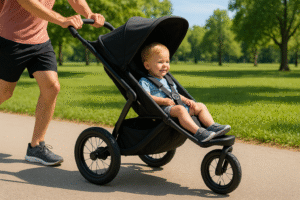
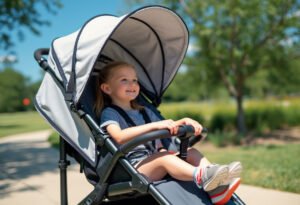
Pingback: Jogging Stroller Rain Cover: Top 5 Essential Picks 2025
Pingback: Trail Running Baby Stroller: Top 5 Amazing Picks 2025